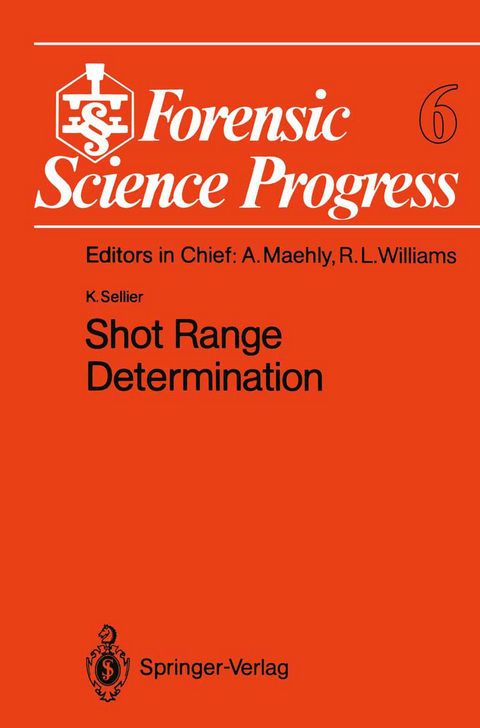
Shot Range Determination
Springer Berlin (Verlag)
978-3-642-76723-4 (ISBN)
1 Introduction.- 2 General Section.- 2.1 Ammunitions.- 2.2 Sequence of Events During Firing.- 3 Classification of Shot Range Zones.- 3.1 Contact Gunshot (Shot with Muzzle Contact).- 3.2 Intermediate Range Gunshot.- 3.3 Distant Gunshot.- 4 Qualitative Detection of the Signs of a Close Range Shot.- 4.1 Detection of Powder Tattooing.- 4.2 Detection of the Soot Element Pb.- 5 Morphological Methods of Shot Range Determination.- 5.1 General Principles.- 5.2 Infrared Photography.- 5.3 Sheet Printing Methods, Chemical.- 5.4 Sheet Printing Method, Physical (Autoradiography).- 5.5 Determination from Powder Tattooing.- 5.6 Imaging with X-Ray, X-Ray Fluorescence.- 6 The Sampling Test Method for the Quantitative Determination of Shot Range.- 6.1 Initial Remarks and Underlying Principles.- 6.2 Emission Spectrum Analysis (ESA).- 6.3 Atomic Absorption Spectrography (AAS).- 6.4 Neutron Activation Analyses (NAA).- 6.5 Polarography.- 6.6 Other Methods of Shot Range Determination.- 6.7 Possible Errors in Shot Range Determination.- 7 Shot Range Determination for Shotguns.- 7.1 General Remarks.- 7.2 Characteristics of the Barrel, Choke.- 7.3 Shot Patterns-The Diameter of the Shot Pattern as a Function of the Range and Other Parameters.- 7.4 Practical Procedures of Shot Range Determination for Shotguns.- 8 References and Further Readings.- 9 Subject Index.
| Erscheint lt. Verlag | 23.12.2011 |
|---|---|
| Reihe/Serie | Forensic Science Progress |
| Zusatzinfo | XI, 105 p. 37 illus. |
| Verlagsort | Berlin |
| Sprache | englisch |
| Maße | 155 x 235 mm |
| Gewicht | 194 g |
| Themenwelt | Naturwissenschaften ► Chemie ► Analytische Chemie |
| Schlagworte | Absorption • Antimon • Atom • classification • Criminalistics • Distribution • fluorescence • Forensic Science • Gerichtliche Chemie • Legal Medicine • Rechtsmedizin • Sorption • X-Ray |
| ISBN-10 | 3-642-76723-0 / 3642767230 |
| ISBN-13 | 978-3-642-76723-4 / 9783642767234 |
| Zustand | Neuware |
| Haben Sie eine Frage zum Produkt? |
aus dem Bereich


